Strategic resource allocation helps you to realize overall business profitability and revenue growth. But if you get it wrong, missteps can spiral into lost money, unsatisfactory deliverables, and paralyzing organizational bottlenecks.
In this guide, you’ll learn how to nail your resource allocation process for improved operational efficiency and accelerated decision-making.
But first, let’s make sure we’re on the same page…
What Is Resource Allocation?
Resource allocation is the identification of resources you can dedicate toward strategic initiatives, specific projects, or activities in your company. It means figuring out the optimal way to use available resources to get the job done. The whole process often involves one or all of the following:
- Understanding business priorities and goals.
- Tracking progress and creating milestones to aim for.
- Finding team members with the best skills and assigning them the right initiatives.
- Outlining how your resources can meet the project budget or project requirements.
- Creating a work breakdown structure to account for initiative, project, or task dependencies.
The Benefits Of Strategic Resource Allocation
There are significant benefits to implementing strategic resource allocation for both companies and their stakeholders:
Alignment with the corporate strategy
The goal of strategic alignment is simple: to ensure that resources are leveraged in the most optimal way to impact business results. By doing so, it reduces the likelihood of bottlenecks in the execution process. It also fosters better working relations between different departments and ensures that every member of your organization is moving towards the same business outcome. Everyone has a clear understanding of their priorities and the tools they need to achieve them.
📚Recommended reading: How To Build Organizational Alignment
Resource utilization and efficiency
With proper resource allocation, you not only optimize the use of funds but also prevent team burnout by ensuring no personnel are being overextended. This can bolster stakeholder confidence in your organization’s ability to manage finances and safeguard employee well-being.
Cascade Strategy Execution Platform improves operational efficiency by eliminating duplication and aligning teams toward a common goal. It helps reduce waste caused by misalignment, ensuring smoother operations and better performance overall.
Strategic oversight and flexibility
Strategic resource allocation gives you an easily-accessible reference as to all the moving parts across your organization, allowing you to identify teams, projects, and initiatives that are performing well—and increasing support as necessary. This can also allow you to quickly pivot resources to an area that is underperforming and execute strategy within the planned timelines.
📚Recommended reading: Centralized Business Observability To Boost Your Bottom Line
7 Steps To Strategically Manage Resources Across The Organization
1. Identify strategic initiatives
First, you’ll need to understand how exactly your organization is performing concerning its goals. What are your core business metrics and financial statements reflecting, and what strategic initiatives can your company pursue to improve its overall performance?
This will help you match your resources to strategic initiatives that will have the most impact to move the needle.
Here are some examples of strategic initiatives:
- Product development to enter a new market
- Cutting supply chain costs
- Increasing customer satisfaction
👉How Cascade can help:
Cascade’s Metrics Library helps you unify all core business data in one place and pinpoint performance, giving you clear oversight into which strategic initiatives are worth pursuing. This will help you to root your decisions in data and move forward with confidence that you’re going in the right direction.
🎥Watch this short video explaining how to use the Metrics Libray in Cascade.
2. Assess resource needs and organizational constraints
Once you have an idea of where your organization stands strategically, you can focus your attention on the resources that it needs to reach the goals that you’re working towards.
Some examples of resource needs include:
- Tools, equipment, and facilities for different departments
- Essential software or licenses for operations
- Staffing and other personnel for specific jobs
- Support personnel who may be from outside the organization
- Projected financing for your initiatives and projects
This step is about pinpointing what you need and checking its availability, not about allocating resources. That comes later in the process.
3. Prioritize strategic initiatives
Organizations often have several strategic goals, but with limited resources, they can't tackle them all at once. This is where prioritization comes in, helping focus on key objectives.
Here are some decision-making tools and frameworks on Cascade’s blog to help you:
- Decision matrix: This template will help you analyze and pick the most important option based on specific criteria. It allows you to make data-driven decisions toward high-ROI initiatives based on the most critical factors that meet your organization’s needs.
- GE Matrix: A framework to help you manage portfolios and prioritize investment across different strategic business units. This allows you to allocate resources (usually capital) as needed and gives you a better idea of which initiatives need focus and which can be dropped.
- Competitive analysis: This collection of competitive frameworks will help you analyze market dynamics and the competitive landscape. This will help you recognize marketing opportunities and threats to effectively assign resources.
📚 Recommended read: 7 Decision-Making Tools For Business Leaders
4. Choose your resource allocation strategy
Once you understand where your organization stands, where you want it to go, and what steps you need to take, it’s time to allocate resources. Use the insights from previous steps to develop your resource allocation strategies and decide which initiatives get what resources.
Here are some examples:
- If your organizational priority is growth, allocate resources to R&D, marketing, and expansion.
- If your organizational priority is profit, dedicate resources to high-margin products or services.
- If your organizational priority is control, assign resources to compliance, security, and governance.
Don’t forget to balance your strategic priorities with resource availability. Avoid projects with low returns just because resources are at hand. Proper identification, categorization, and assignment of your resources ensure that you allocate them optimally.
5. Communicate allocation of resources
A key aspect of resource allocation is alignment: ensuring that every stakeholder understands how they can properly utilize their resources—whether that’s finances, manpower, or time.
For organization-wide initiatives, this can be as simple as having an overview of all ongoing initiatives or a detailed map outlining the connections between each department and how their activities overlap.
%20(1).png)
This overview in a centralized place can also help with:
- Giving a clear view of what KPIs are being reached.
- Outlining the performance of assigned resources in real-time.
- Helping the entire organization stay consistent in working toward a specific initiative.
- Informing other resources outside the organization that contribute towards your goals.
- Promoting clarity and conciseness of information sharing at each milestone or benchmark.
👉 How Cascade can help:
You can easily assign priorities to each objective, allowing stakeholders to better understand what’s important and how to organize their work. You can also reorganize your strategic plan based on the priorities without having to risk miscommunication across different departments in your organization.

6. Implement and monitor
Continuous monitoring is crucial in ensuring your resource allocation is reaching its targets. It allows you to spot:
- Assets being underused or used incorrectly
- Overspend or overallocation of resources on a single project
- Project scopes expanding unexpectedly ("scope creep")
- Resources bottleneck or shortages
This real-time data provides a solid foundation for iterative strategic planning and decision-making. It helps you make informed financial decisions and quick adjustments when needed.
👉 How Cascade can help:
Cascade’s dashboards help you monitor and analyze your key business metrics and information. They are highly customizable, helping you use different visualization options and present insights that power decision-making.
.png)
7. Review and adjust
Resource allocation shouldn't be set in stone. Regularly review your resources and adjust as necessary. This could be in response to changes in the business environment, unexpected challenges during execution, or shifts in strategic objectives.
👉 How Cascade can help:
In Cascade, you can easily create, share, and collaborate on reports to ensure everyone understands the context, performance, and decisions for changes in resource allocation. Analyze performance across teams, departments, and projects with simple visualization and engaging reports.
4 Challenges That Prevent Effective Resource Allocation
Every organization, regardless of size, grapples with resource allocation challenges. Recognizing and addressing these is key to mitigating the negative consequences.
Overlooked resource dependency
This challenge refers to the lack of understanding of how different resources within an organization are interconnected. These can be people, equipment, time, or money, and they often depend on one another to deliver the expected results.
Cascade's Alignment map and Relationships directly tackle this by enabling users to see the connections between objectives, metrics, projects, and actions. This ensures real-time status monitoring and swift removal of any bottlenecks.
Use of outdated legacy tools
Many organizations still rely on legacy tools or systems, like spreadsheets or traditional project management software, to manage their resources and operations. While these tools have stood the test of time, they might not cater to the evolving demands of modern operations in terms of complexity, speed, or scale.
With Cascade, you get access to modern strategy execution software that scales your needs, with flexibility and collaboration built into the platform’s design. This supports your growth long-term, ensuring streamlined operations without organizational chaos and disruptions.
Limited visibility within a complex organization
Larger or more complex organizations often struggle to see all their resources in a single view. This can result from geographical dispersion, departmental silos, or disconnected resource management software solutions. Poor visibility makes it hard to understand resource utilization, pinpoint shortages or duplication, and optimize resource allocation.
Cascade addresses this by centralizing all the necessary information about strategic initiatives and projects in a single platform. This centralized observability gives leaders complete insight into their initiatives so that they can stop what’s not working and double down on what is.
Lack of flexibility
All the shortcomings above can ultimately cause organizations to be too rigid in their resource allocation. They can struggle to adapt to changes and seize new opportunities, and risk lowering the efficiency of their operations and decreasing customer satisfaction.
In Cascade, you can quickly identify risks and align everyone around critical initiatives before it’s too late. This promotes a dynamic approach that your organization can always rely on to solve potential critical challenges and gives you the data you need for confident decision-making.
8 Templates To Help You With Effective Resource Management
The Cascade platform has 8 different templates that any organization can easily and quickly use to help kick-start their resource planning:
Project Plan Template
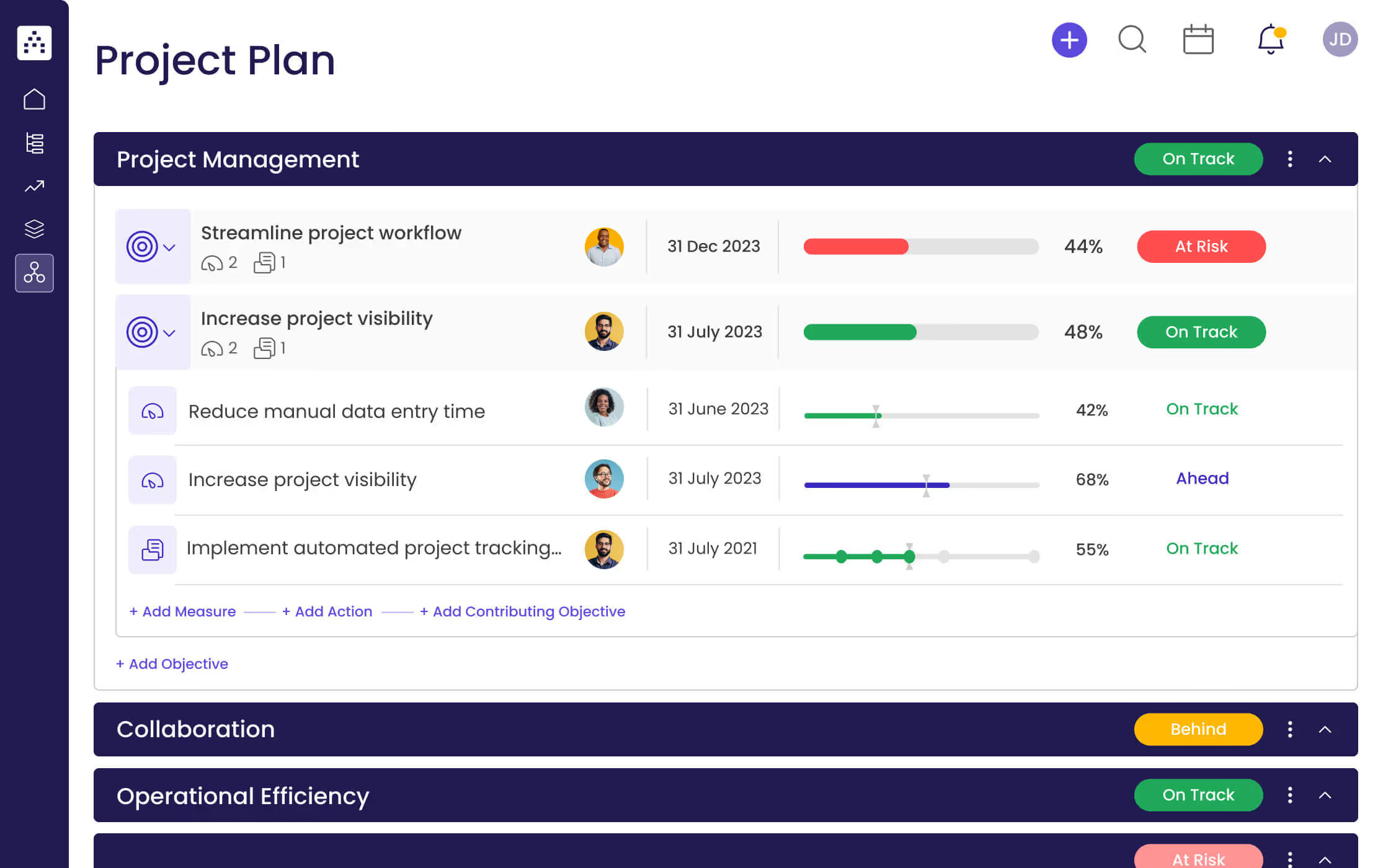
This template is tailored for project teams that want to monitor the project lifecycle and ensure successful project execution. It streamlines project tasks, provides clarity on roles and project timelines, and ensures efficient resource allocation, enabling organizations to stay on track and meet their strategic goals efficiently.
👉Click here to get your Project Plan Template.
Strategic Budgeting Plan Template

Prepare multiple budgets, create financial forecasts, and reduce spending. This works well for financial teams looking to reconcile how their short-term expenses work towards their long-term goals, helping them maximize financial resources and reduce spending on dead-end strategies.
👉Click here to get your Strategic Budgeting Plan Template.
Resource Capacity Plan Template
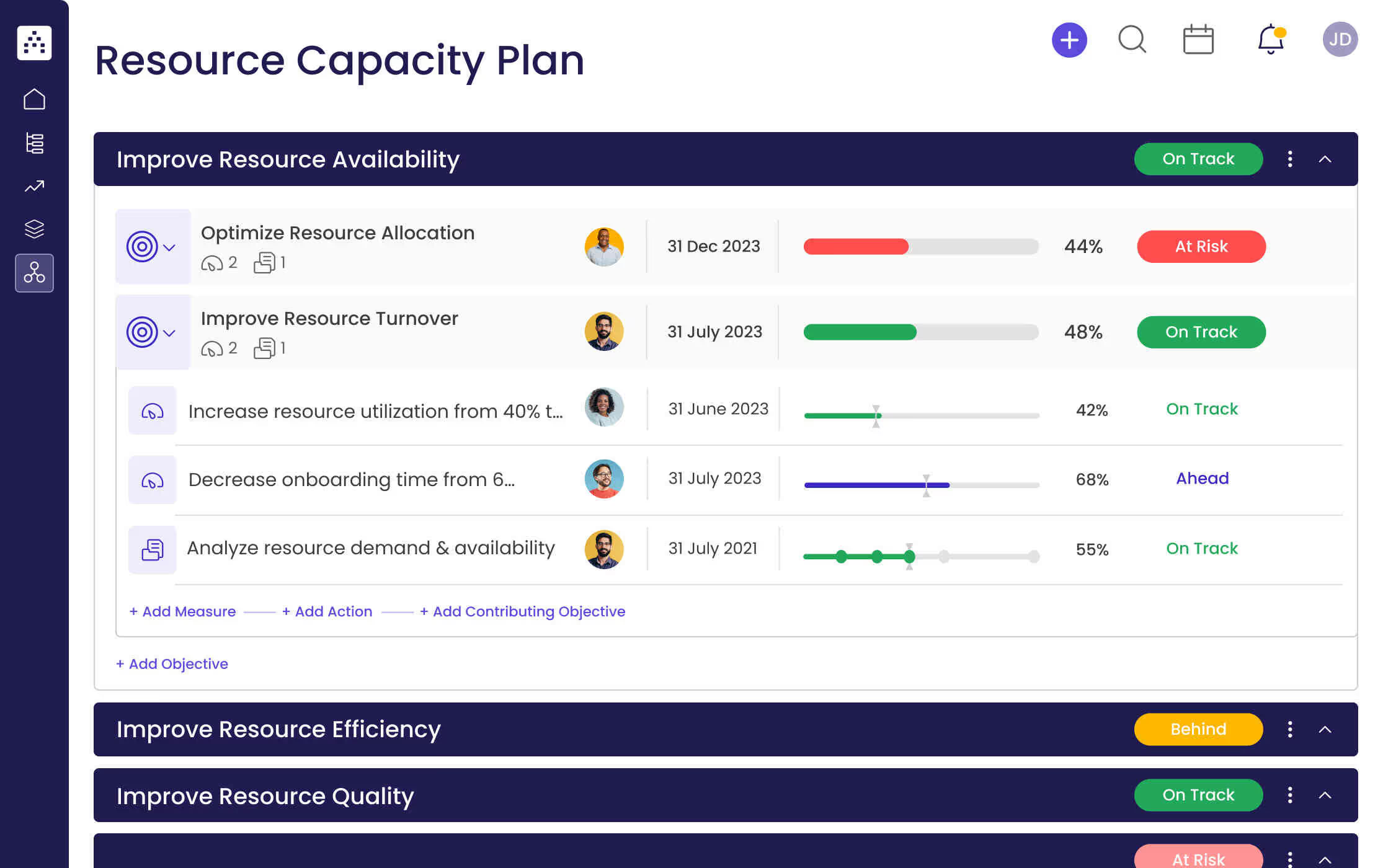
Assess the availability of your resources and allocate them to your new projects efficiently. This template is suitable for resource managers and project leads who want to optimize resource allocation and ensure project success.
👉Click here to get your Resource Capacity Plan Template.
Resource Allocation Plan Template
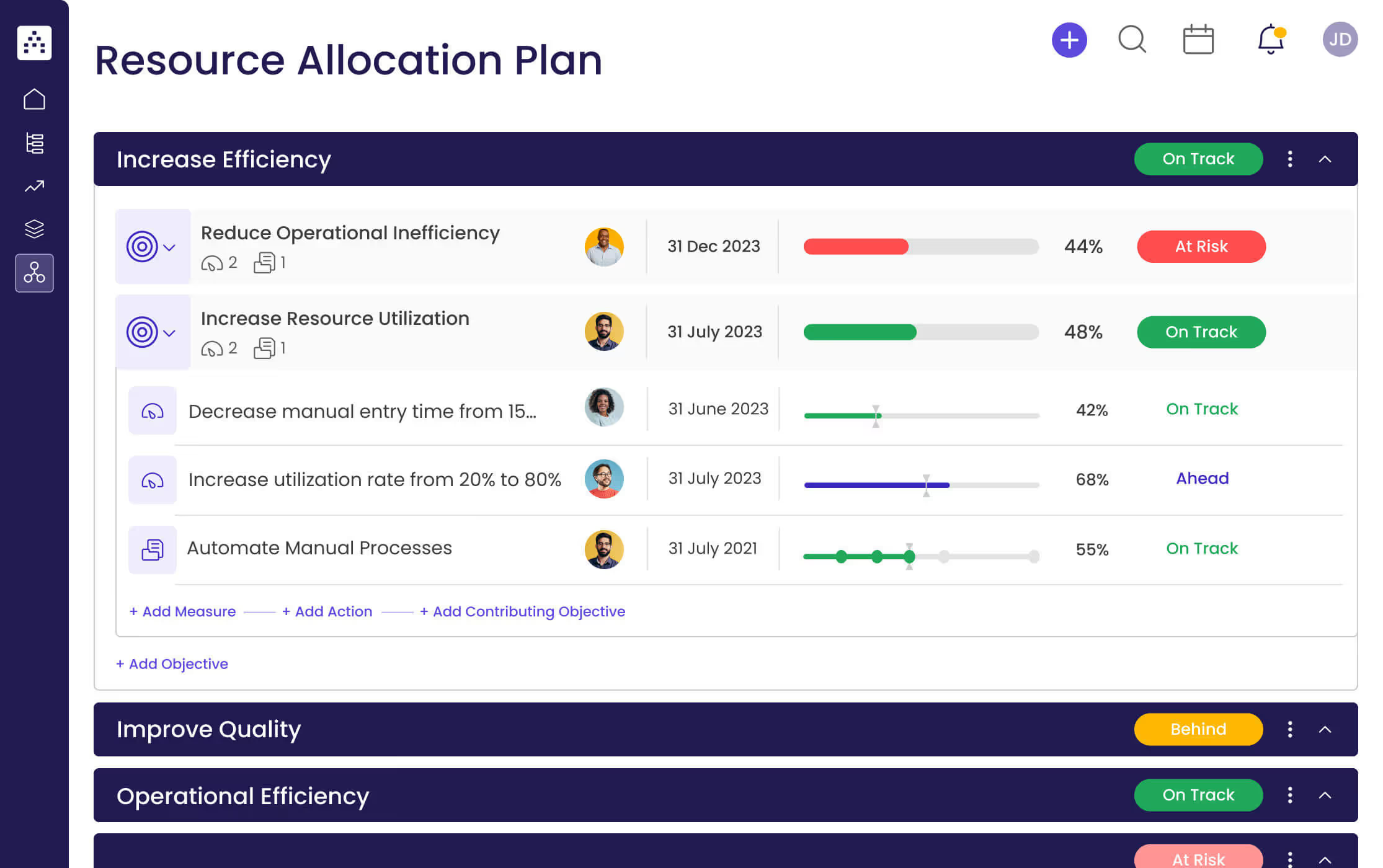
Identify and define the right resources needed to reach your organization’s goals, accounting for anything from personnel, equipment, and finances. Useful for teams that need a resource allocation strategy to use their resources more effectively and align with strategic priorities.
👉Click here to get your Resource Allocation Plan Template.
Project Resource Plan Template

Detail how resources should be distributed across your project. It’s best used by project managers who want to optimize and track the resources used in a specific project, giving them a bird’s-eye view of how their resources work. In doing so, they can ensure they stay aligned with the project schedule.
👉Click here to get your Project Resource Plan Template.
Cost Management Plan Template
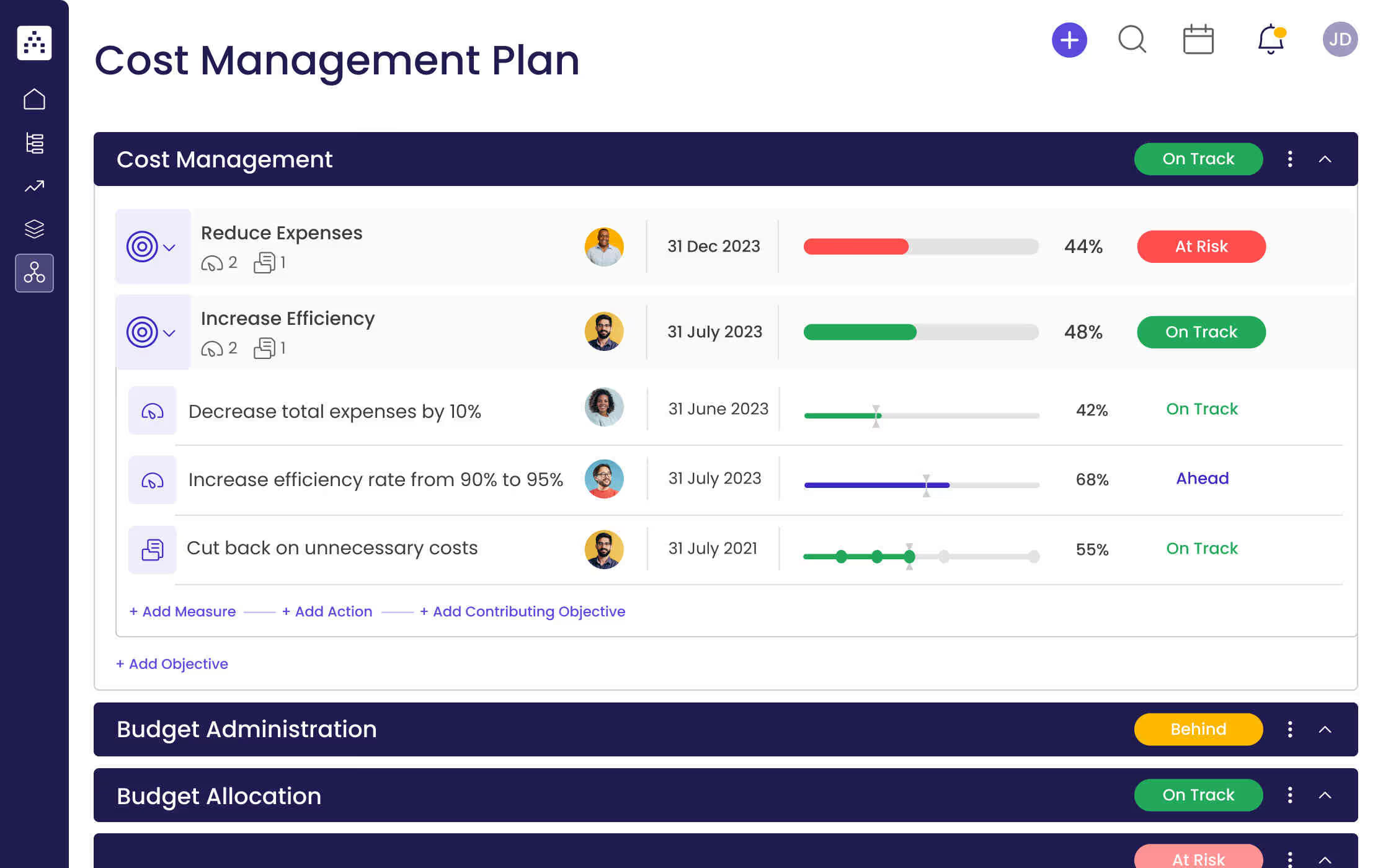
Track expenses and manage funding effectively, especially concerning project costs in the long term. Useful for project managers and team leads who want to ensure accurate financial projects and data-driven decisions.
👉Click here to get your Cost Management Plan Template.
Portfolio Strategy Template
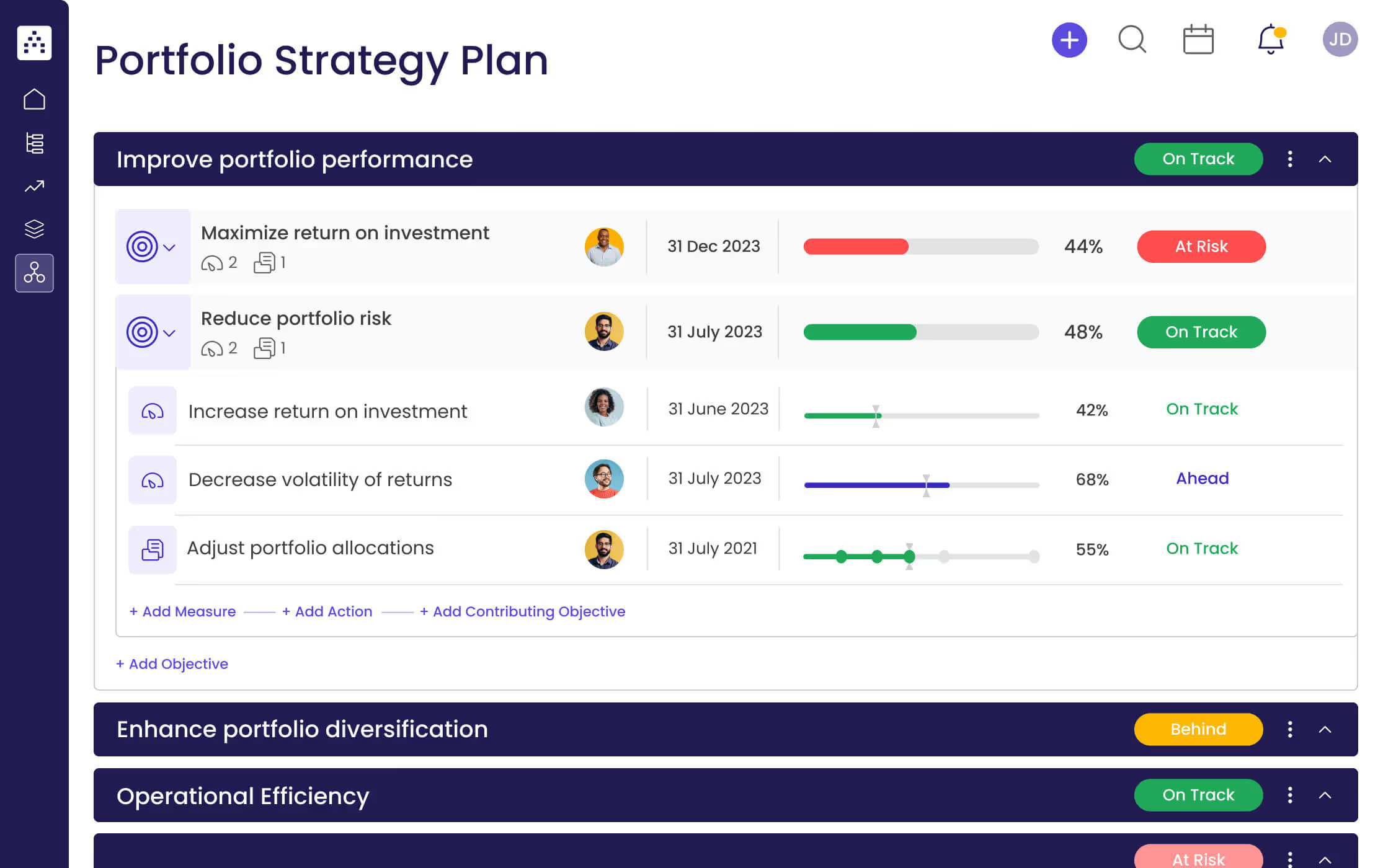
Evaluate and manage the risks and returns of a portfolio, helping you plan your asset allocation more efficiently. It’s best suited to businesses that want to optimize their specific portfolio and increase potential returns.
👉Click here to get your Portfolio Strategy Template.
Staffing Plan Template
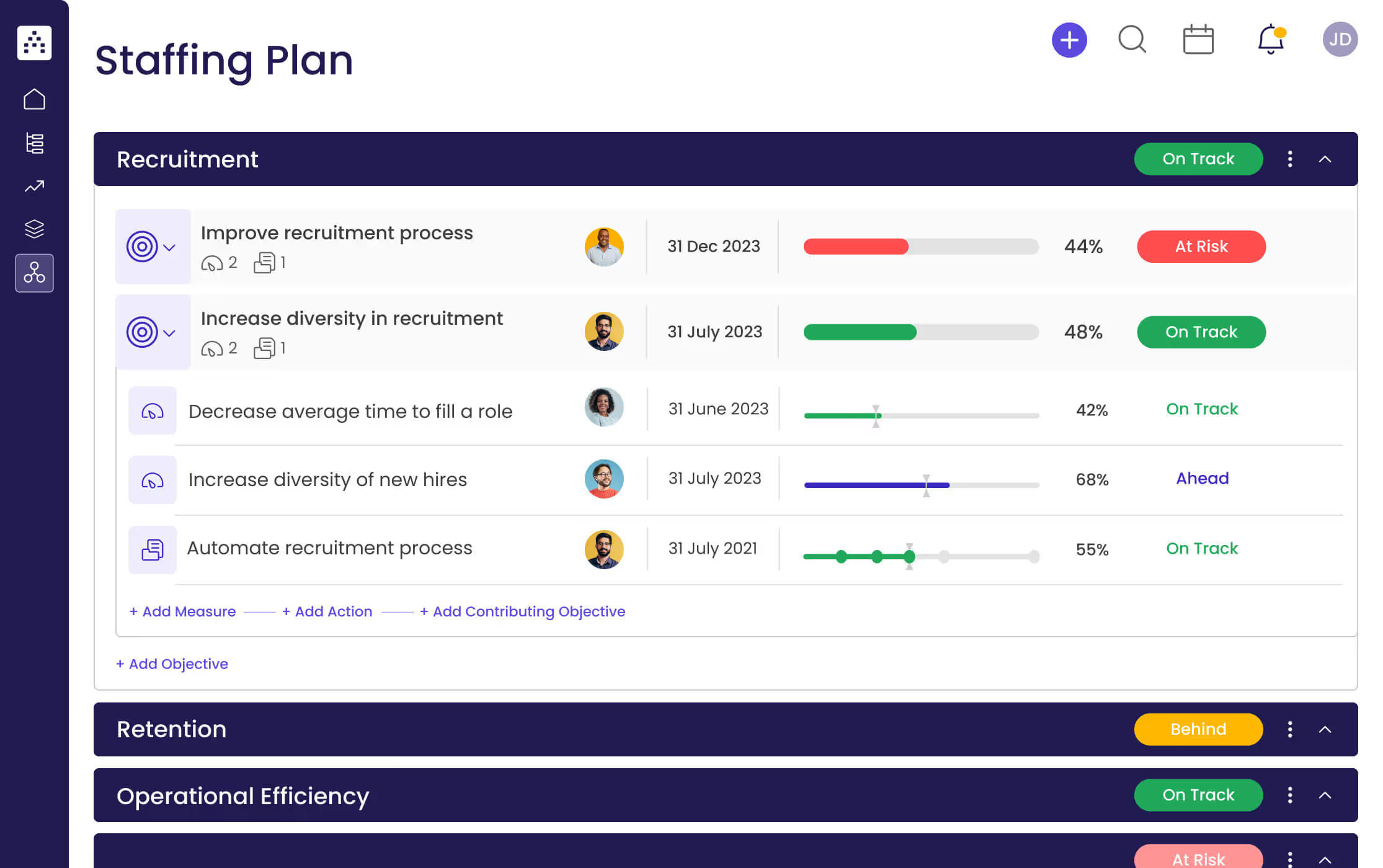
Identify the roles and responsibilities needed from your personnel to achieve your strategic objectives. Best suited for human resources that need a comprehensive staffing strategy that includes everything from vacancies, qualifications, and onboarding.
👉Click here to get your Staffing Plan Template.
💡Need something else? Check out our Strategy Template Library with 1,000+ free templates.
Optimize Your Organization’s Resource Allocation With Cascade 🚀
A strategic resource allocation plan can help your company manage multiple projects through organization-wide coherence and alignment. Using a strategy execution software like Cascade, powered with the key capabilities of a resource management tool, helps you monitor your resources and enables your organization to move faster with centralized observability of your multiple projects, metrics, teams, and initiatives.
If you need help with business planning and resource management, you’ll need a platform that can help you accomplish all that and more.
Sign up today for free or book a guided 1:1 tour with one of our Cascade in-house strategy execution experts.





.png)
.jpg)
.jpg)
%20(1)%20(1)%20(1)%20(1)%20(1).png)



